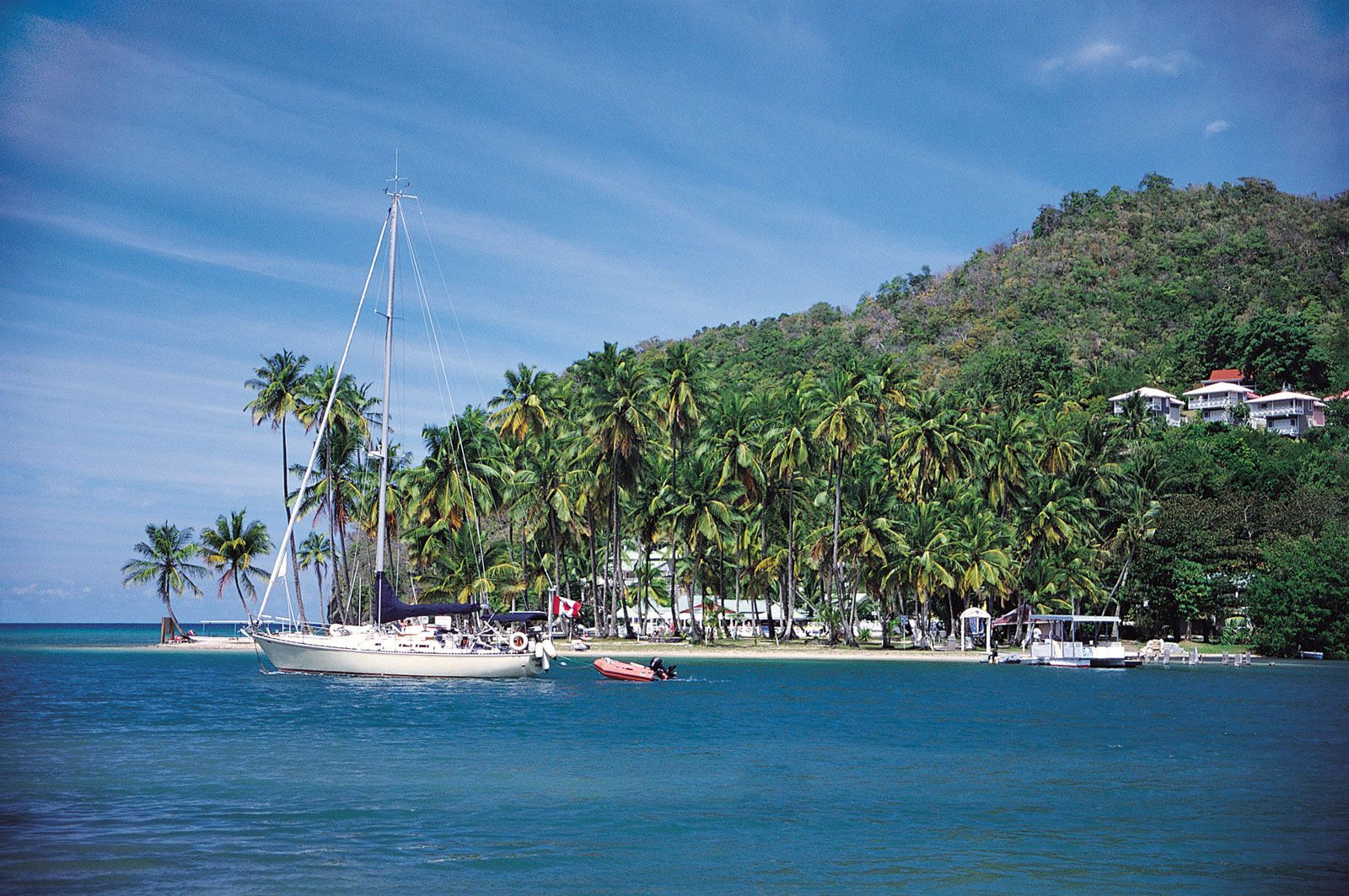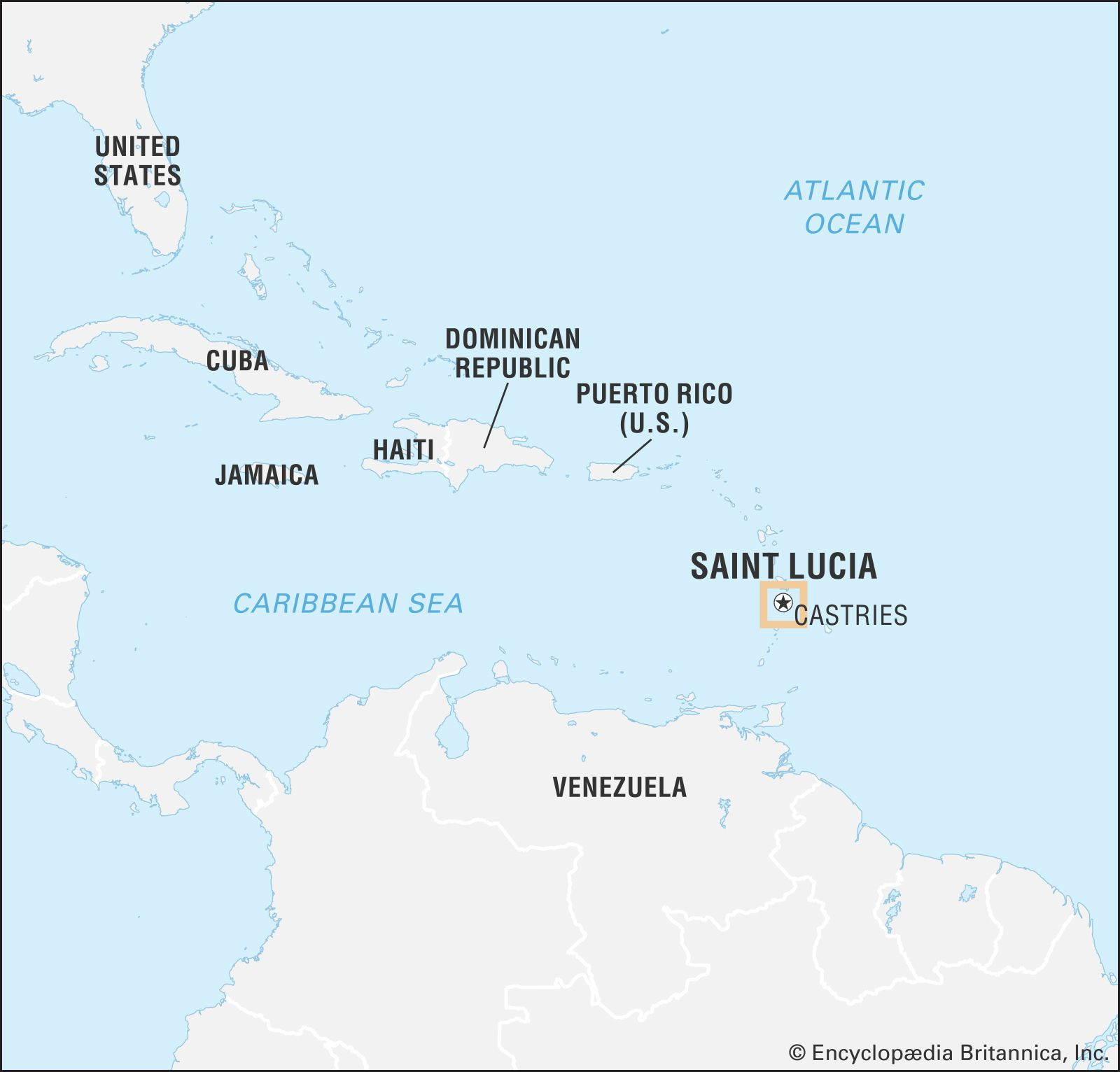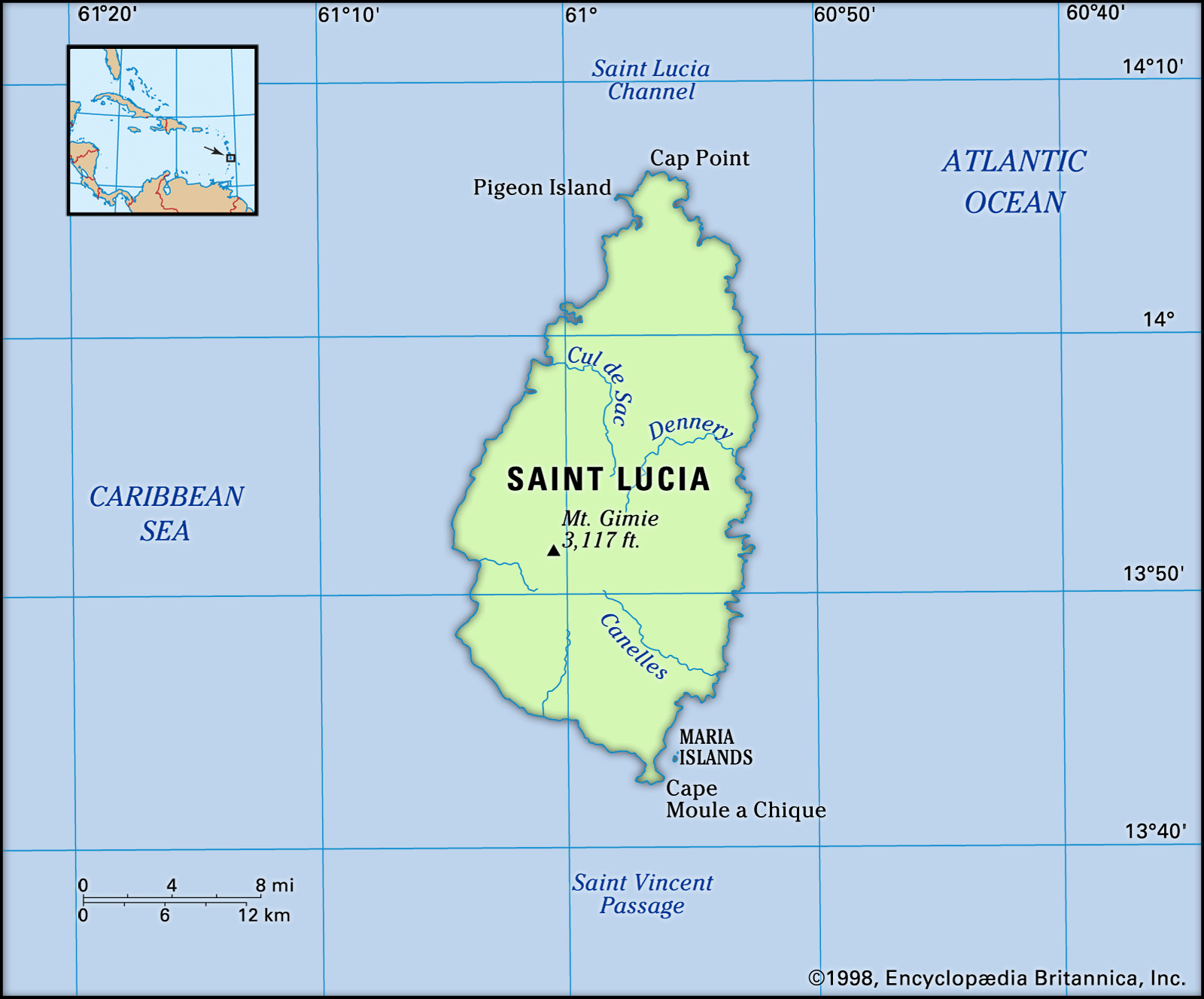St. Lucia, a captivating island nation, is renowned for its breathtaking landscapes, from volcanic peaks to pristine beaches. But where is St. Lucia located exactly? This jewel of the Caribbean is nestled in the eastern Caribbean Sea, specifically within the Windward Islands of the Lesser Antilles. Positioned strategically in this idyllic archipelago, St. Lucia is approximately 24 miles (39 kilometers) south of Martinique and about 21 miles (34 kilometers) northeast of Saint Vincent, making it a central point in the southern Caribbean. Its location is not just a geographical marker; it’s fundamental to understanding its climate, culture, and vibrant ecosystem.
 Saint Lucia map highlighting its location in the Caribbean
Saint Lucia map highlighting its location in the Caribbean
Delving Deeper into St. Lucia’s Geographical Coordinates
To pinpoint St. Lucia’s location more precisely, it lies roughly at 13.9094° N latitude and 60.9789° W longitude. This places it firmly within the tropics, guaranteeing warm weather and lush landscapes year-round. Being part of the Windward Islands chain means St. Lucia benefits from the consistent trade winds blowing from the northeast, which temper the tropical heat and contribute to its pleasant maritime climate. Understanding its position within the Lesser Antilles is also crucial as it sits on the eastern edge of the Caribbean plate, an area known for its volcanic activity, which has sculpted the island’s dramatic topography.
 Aerial view of Marigot Bay in Saint Lucia showcasing its tropical setting
Aerial view of Marigot Bay in Saint Lucia showcasing its tropical setting
St. Lucia in Relation to Neighboring Islands and Key Landmarks
Saint Lucia’s location is further defined by its proximity to other Caribbean islands. To its north is Martinique, a French island known for its sophisticated culture and stunning beaches. Just to the south lies Saint Vincent and the Grenadines, a multi-island nation famed for sailing and pristine waters. This neighborhood within the Caribbean Sea positions St. Lucia as an accessible destination, easily reachable from many parts of the world, particularly North America and Europe. The capital city, Castries, serves as the major port and is located on the northwestern coast of the island, acting as a primary gateway for visitors arriving by sea. Vieux Fort, another significant town, is situated at the southern tip, home to the international airport, Hewanorra, further enhancing St. Lucia’s accessibility.
 Saint Lucia highlighted on a world map showing its global location
Saint Lucia highlighted on a world map showing its global location
The Impact of Location on St. Lucia’s Landscape and Climate
The geographical location of St. Lucia profoundly influences its diverse landscapes and tropical climate. Its volcanic origins, a direct result of its placement along tectonic plates, have blessed the island with fertile soils, lush rainforests, and striking landforms like the iconic Pitons – Gros Piton and Petit Piton. These volcanic spires are not only visually stunning but also a UNESCO World Heritage site, symbolizing the natural beauty of St. Lucia. The island’s location in the tropics ensures a warm, maritime climate, characterized by consistent temperatures averaging around 80°F (27°C). Rainfall varies across the island, with higher elevations receiving significantly more rain, nurturing the dense tropical vegetation. This climate, dictated by its location, makes St. Lucia a year-round destination, although it does experience a wetter season typically from May to November and a drier season from January to April.
 Topographical map of Saint Lucia illustrating its volcanic terrain
Topographical map of Saint Lucia illustrating its volcanic terrain
Why St. Lucia’s Location is Key to Its Identity
Understanding where St. Lucia is located is crucial to appreciating its unique identity. Its Caribbean setting has shaped its history, culture, and economy. Historically, its strategic position made it a point of contention between European powers, particularly France and Britain, vying for control of the lucrative sugar trade. This colonial past has left a lasting impact, evident in the blend of English and French influences, especially in the local patois spoken by many Saint Lucians. Economically, St. Lucia’s location in the Caribbean is paramount for tourism, its primary industry. The island’s natural beauty, easily accessible location, and tropical climate attract visitors from across the globe, seeking idyllic getaways. Furthermore, its location facilitates trade within the Caribbean region and with international partners, contributing to its economic activities beyond tourism.
In conclusion, St. Lucia’s location in the heart of the Caribbean, within the Windward Islands of the Lesser Antilles, is more than just coordinates on a map. It’s a defining factor that shapes its geography, climate, history, culture, and economy. Its position south of Martinique and northeast of St. Vincent places it perfectly within the reach of travelers seeking a quintessential Caribbean experience. Whether you’re drawn by its volcanic landscapes, tropical climate, or rich cultural tapestry, knowing where St. Lucia is located is the first step to discovering the allure of this Caribbean gem. Plan your visit and experience firsthand the magic of this uniquely positioned island paradise.


